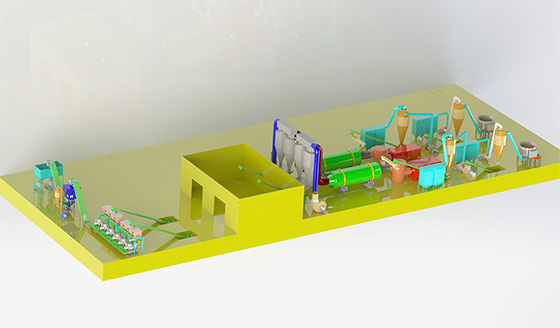Biomass power generation is recognized by the market, and the development space is promising in the future
Update time:
2022-07-18

Biomass subsidy disbursement accelerated to account for the increase
On July 15, the State Grid released the "Announcement of the State Grid Co. on the 1st allocation of renewable energy tariff surcharge subsidy funds for the annual budget of 2022". The Announcement points out that for the 1st request of the 2022 annual budget, the Ministry of Finance expects to allocate a total of RMB 39.937 billion to the company's annual budget for renewable energy tariff surcharge subsidies, including RMB 10.518 billion for wind power, RMB 26.067 billion for solar power and RMB 3.352 billion for biomass power. Compared with the whole year of 2021, the State Grid 2021 allocated a total of 76.101 billion yuan of renewable energy tariff surcharge subsidy funds, including 4.483 billion yuan of biomass power generation. This first batch of biomass subsidy funds of State Grid 2022 has reached 75% of the whole year of 2021, and the biomass subsidy accounted for 8.39%, 2.50 pct higher than 5.89% in 2021, and the biomass subsidy disbursement accelerated to account for the increase. This reflects the gradual attention to the ecological value of biomass power generation in the context of double carbon, which also helps to improve the profit level of biomass power generation projects. From the feedback of the market, the biomass power generation sector today is not losing wind power PV at all.
What is biomass power generation?
Biomass refers to various organisms, including plants, animals and microorganisms, formed directly or indirectly through photosynthesis. Biomass energy refers to the energy stored in biomass by solar energy in the form of chemical energy, which is a clean and environmentally friendly renewable energy. Biomass power generation, on the other hand, refers to the use of biomass with biomass energy for power generation. In terms of classification, biomass power generation is divided into agricultural and forestry biomass power generation, waste incineration power generation and biogas power generation. Agricultural and forestry biomass power generation can be divided into direct combustion power generation and mixed combustion power generation in terms of power generation technology.
According to the National Energy Administration statistics, as of the end of 2020, the national biomass power generation capacity under construction 10,271,000 kilowatts. Among them, 6,245,000 kilowatts, or 60.8%, is waste incineration power generation; 3,829,000 kilowatts, or 37.3%, is agricultural and forestry biomass power generation.
What are the advantages of biomass power generation
1, biomass power generation is less restricted by natural conditions, high reliability, good sustainability, wide range of fuel sources, small initial investment in engineering, can use the mature small thermal power generation technology for transformation, conducive to industrialization and scale up.
2, biomass is clean energy compared with traditional thermal power generation, the content of harmful substances (sulfur and ash, etc.) in biomass is only about 11 to 10 of medium quality bituminous coal, while the emission and absorption of biomass carbon dioxide constitute the natural carbon cycle, and its energy use can achieve zero carbon dioxide emissions. Practice has proved that the effect of biomass energy on reducing carbon dioxide emissions is very obvious, so biomass energy is a highly clean energy technology, is a scientific choice to reduce greenhouse gas emissions and prevent global environmental degradation.
3, in line with the national new energy policy and the three agricultural policies. China in the "People's Republic of China Energy Conservation Law" clearly pointed out that the state encourages the development and use of new and renewable energy, renewable energy referred to in this law, refers to wind, solar, water, biomass, geothermal energy, ocean energy and other non-fossil energy. The state will be the development and utilization of renewable energy as a priority area of energy development, through the development of renewable energy development and utilization of the total target and take corresponding measures to promote the establishment and development of renewable energy market. The state encourages all kinds of economic entities to participate in the development and utilization of renewable energy, and protects the legitimate rights and interests of those who develop and utilize renewable energy according to the law. For example, the straw fuel required for biomass power generation needs to be acquired from farmers, which directly increases the income of farmers. Can also use biomass fuel pellets as fuel, not only to the large-scale application of biomass plays a key role also can provide more business opportunities and development opportunities to related industries such as biomass pellets.
The future of biomass power generation is promising
The carbon neutral target is the inherent requirement and inevitable trend for China's economy to enter into high quality development, the process of power system construction is also undergoing structural changes, renewable energy power generation will gradually be called the mainstream of power construction, and biomass power generation technology is currently one of the most common and effective methods of biomass application, biomass power generation future can be expected.











